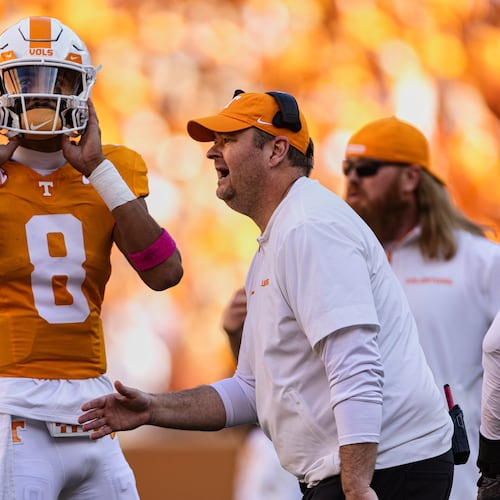Texas and Oklahoma submitted a request Tuesday to join the SEC, with SEC Commissioner Greg Sankey saying the league would consider it in the “near future.”
The Big 12 schools sent a joint letter to Sankey with requesting “invitations for membership to the Southeastern Conference starting on July 1, 2025.”
“We believe that there would be mutual benefit to the universities on the one hand, and the SEC on the other hand, for the universities to become members of the SEC. We look forward to the prospect of discussions regarding this matter,” the schools said in a letter signed by each university’s president.
Oklahoma and Texas are bound to the Big 12 and its eight other members — Kansas, Kansas State, Iowa State, Oklahoma State, TCU, Baylor, Texas Tech and West Virginia — through the 2024-25 school year by a grant of media rights that runs concurrent with the conference’s billion-dollar television deals with ESPN and Fox.
“The events of recent days have verified that the two schools have been contemplating and planning for the transition for months and this formal application is the culmination of those processes,” Big 12 Commissioner Bob Bowlsby said in a statement.
The SEC appears receptive.
“While the SEC has not proactively sought new members, we will pursue significant change when there is a clear consensus among our members that such actions will further enrich the experiences of our student-athletes and lead to greater academic and athletic achievement across our campuses,” Sankey said.
SEC bylaws state at least three-fourth of its members (11 of 14) must vote in favor of extending an invitation for membership.
Texas A&M joined the conference in 2011 along with Missouri in the SEC’s most recent expansion. A&M initially voiced concerns about allowing an in-state rival to join the conference, but athletic director Ross Bjork has since suggested his school would not shy away from added competition.
Oklahoma and Texas took the first formal step Monday toward moving to the Southeastern Conference, notifying the Big 12 they would not be renewing an agreement that binds the league’s members through 2025.
The schools sent out a joint statement that made no mention of the SEC and said “the universities intend to honor their existing grant of rights agreements.”
Joining another conference before the grant of rights expires would cost the schools tens of millions of dollars per year in relinquished revenue and possibly exit penalties.
Competing in the conference as a lame duck for four more seasons doesn’t benefit the schools and isn’t ideal for the Big 12, either. If the conference is going to survive, it needs to begin rebuilding soon to show stability heading into negotiations for its next television contract.
Meanwhile, the SEC is poised to grow to 16 teams with the additions of Texas and Oklahoma, half of which have won at least one national championship in football since 1980.
Credit: SEC
The SEC’s most recent television contract with ESPN, set to take effect in 2024, is expected to increase revenue distribution to its member schools to about $67 million per year.
The Big 12 was approaching distributions of $40 million per school before the pandemic led to distributions dropping to $34.5 million per school this year.The SEC would grow to 16 teams with the additions of Texas and Oklahoma, half of which have won at least one national championship in football since 1980.
The news broke last week at SEC Media Days in Hoover, Ala., that Texas and Oklahoma, the Big 12′s flagships universities, had been discussing a possible move with SEC officials. The Houston Chronicle was first to report the intended jump, but neither the schools nor the SEC would publicly confirm the parties had been in discussions.
The boards of regents at Texas and Oklahoma each announced Tuesday that meetings would be convened Friday with conference affiliation on both the agendas.
The Big 12 was created from a merger of sorts between the Big Eight and Southwestern Conference in 1994 and began play in 1996. Texas and Oklahoma are the conference’s most notable brands. They have the richest and most successful athletic departments, and they are the only Big 12 schools to win national college football championships.
“We are unwavering in the belief that the Big 12 provides an outstanding platform for its members’ athletic and academic success,” Bowlsby said. “We will face the challenges head-on, and have confidence that the Big 12 will continue to be a vibrant and successful entity in the near term and into the foreseeable future.”
About the Author
Keep Reading
The Latest
Featured


